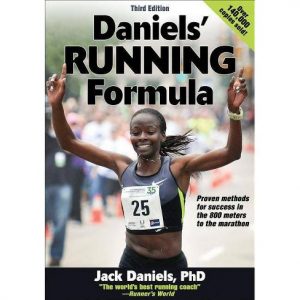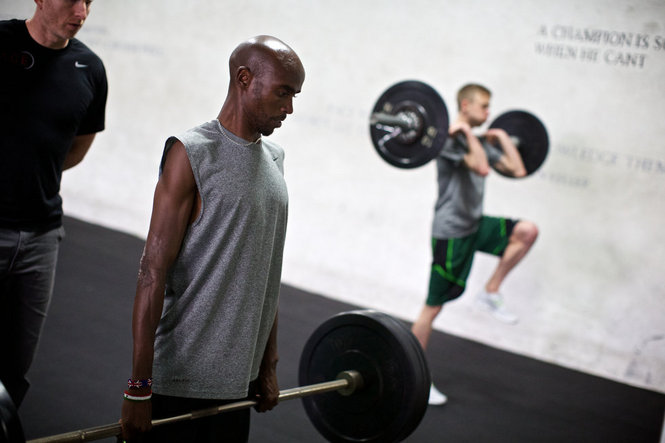Good runners are made, not born. If you want to become a better runner, the opportunity is there if you take the right steps.
Too many runners find excuses like “I don’t have time,” “I’m not the type of person who does strength exercises,” or self-limiting beliefs like, “Someday I hope to finish my first half marathon.” The limitations we put on ourselves are holding us back from becoming the runner we truly want to be. So, what can we learn from the best about how to become better runners?
Approaching Our Training Plans
 The UNC Marathon Team’s training is broken down into three plans — Half Marathon, Marathon, and Advanced Marathon. Each plan is loosely based on Jack Daniels’ training philosophy (Jack Daniels Running Lectures) , which emphasizes easy paced running, while at the same time, incorporating key intense sessions. Long distance races, such as the Half and Full Marathon, are challenges of mental and physical endurance. Each of our plans is tailored towards the semester’s team race. The following is a description of the various pace intensities in layman’s terms that we hope will help assist our runners in understanding the goal of each run we do.
The UNC Marathon Team’s training is broken down into three plans — Half Marathon, Marathon, and Advanced Marathon. Each plan is loosely based on Jack Daniels’ training philosophy (Jack Daniels Running Lectures) , which emphasizes easy paced running, while at the same time, incorporating key intense sessions. Long distance races, such as the Half and Full Marathon, are challenges of mental and physical endurance. Each of our plans is tailored towards the semester’s team race. The following is a description of the various pace intensities in layman’s terms that we hope will help assist our runners in understanding the goal of each run we do.
Easy Pace – Easy runs should be easy, like stupid easy. The majority of the mileage run each week in preparation for a long distance race should be easy. It is a great way to build aerobic endurance, while minimizing the risk that is incurred by “pushing it” day in and day out. A good way to gauge easy running by being able to have a conversation while running, without having to think about breathing.
Marathon Pace – For marathon pace workouts or long runs, you should run about 30 seconds faster than your easy pace. In other words, you still should be able to have a conversation, but it shouldn’t be effortless. The goal of marathon pace running is to train the mind more so than the body. To the body, there isn’t much of a difference between marathon pace and easy. Running at this intensity is all about gaining confidence running a slightly faster, but sustainable pace.
Tempo Pace – Tempo runs are about 30 seconds faster than marathon pace. At this pace you should still be able to talk, but really only a sentence or few words at a time. While running at this pace we are working on developing aerobic power and leg turn over. It should be tough, but manageable.
Interval Pace – As a team, we will do a variety of tack style 800 meter, 1 km, and 1200 meter work outs where interval repeats should be about 30 secs faster than tempo pace. You shouldn’t be able to talk, it’s fast and should be challenging. In these workouts we are focusing an anaerobic power, along with form and running economy. These workouts are challenging, but are made easier by running easy on other training days.
Repetition Pace – The repetition pace should basically just be as fast as you can run for our purposes because if it is included in a workout, it’s just a glorified stride. The goal here is to work on running economy, form, and leg turn over.
Focus on the Process
Outcome goals (like a PR or Boston Qualifying marathon) are important. But the process of training should be your primary goal on a day to day basis. It’s all about execution: execute your warm-up routine, your workout, and your strength exercises. Then go deeper: execute a good night’s rest and a sifficient, high-quality diet.
If you get anxious when training, remember that the priority workouts, a long run and 1-2 faster workouts each week, are the most important. Are these runs being executed to the best of your ability? Running slower on easy runs is important to ensure you are properly rested for these bigger runs. When training, remember to trust the process, rest as much as you need, and listen to your body!
Consistency and Progression Over Time
There’s no doubt that successful distance running is a long-term endeavor. Beginners must take the long view and expect to progress gradually. Make running a habit and keep training, year after year.
There’s a tendency to look at successful runners and try to do the exact workouts they do. You may also think they’re lucky, gifted, or genetically predisposed to running fast. And of course, talent plays a part in everyone’s ability to compete in any sport. But before any great performance, every runner has undoubtedly endured years of setbacks, grueling workouts, hard work, injuries, small successes, and stretches of poor performances.
Don’t Just be a Runner
Running is the most important thing in your training plan. But you can’t just run. Training includes a lot more than just easy runs, long runs, and faster workouts.
Are you also doing all these?
Is your training plan structured in such a way that it prioritizes injury prevention? Running without supplementary stability and strength-training can contribute to injury risk.




